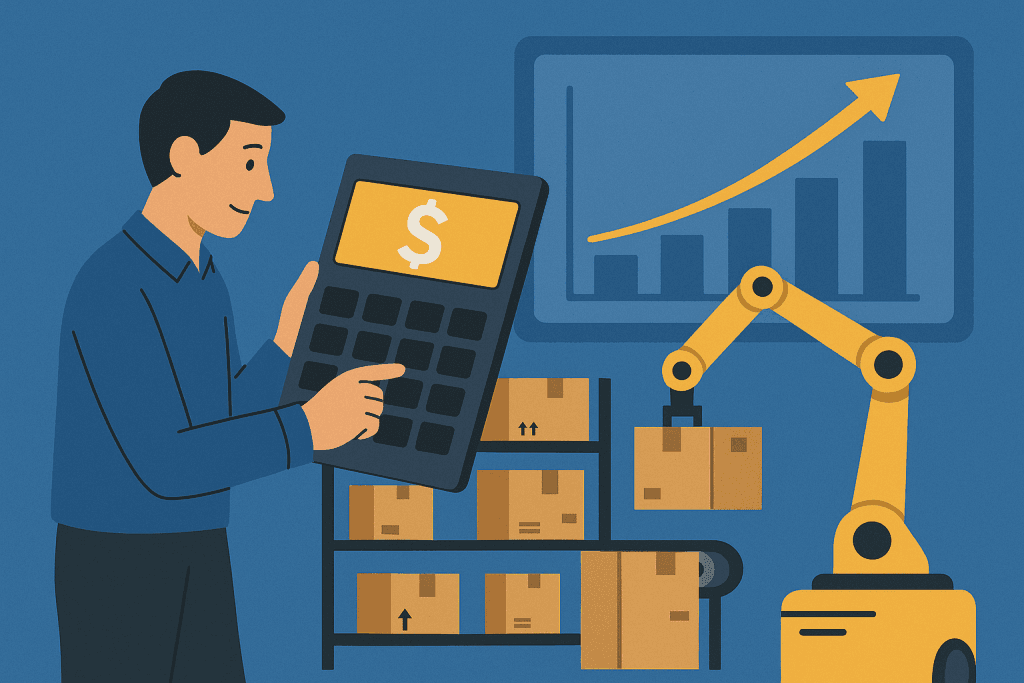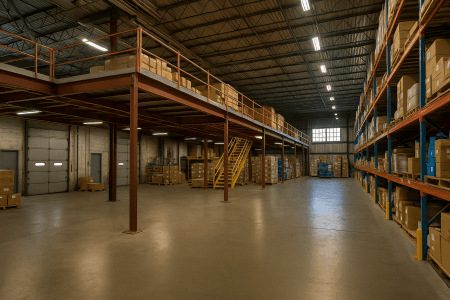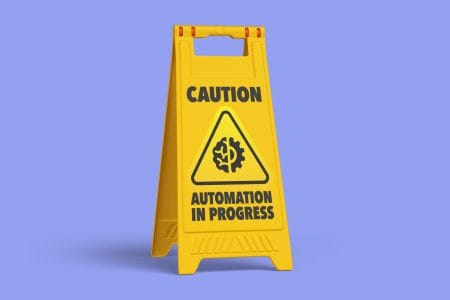How do you measure ROI in warehouse automation?
ROI in warehouse automation is calculated by comparing the system’s total cost of ownership against the annual savings in labor and facility expenses, as well as the improvements it drives in accuracy, throughput, and overall operational efficiency.
While automation delivers clear cost savings through labor reduction and space efficiency, a full ROI assessment should also include secondary gains such as faster employee onboarding, fewer human errors, improved inventory tracking, lower energy use, and increased throughput.
These benefits must be weighed against the solution’s total cost of ownership, which includes not only the upfront purchase price but also any required facility modifications and ongoing maintenance and staffing needs to keep the system operating effectively.
What is the main driver of ROI in warehouse automation?
The strongest contributors to ROI are how fully the system is utilized each day and the degree to which it reduces manual labor.
Automation delivers the strongest ROI when used across multiple shifts per day. Because automation expenses are fixed, savings grow with utilization. A warehouse running 24/7 can realize ROI up to four times faster than a single-shift 5-day operation. Choosing scalable automation that increases throughput without adding headcount enhances these results even more.


How do I calculate the payback time on warehouse automation?
You can estimate payback time by dividing the total automation investment by the annual savings it generates in labor, space, and performance improvements (such as fewer returns and reduced inventory loss). Some secondary benefits, like higher customer and employee satisfaction, are more difficult to quantify.
Typical payback time for single-shift operations is 3-4 years. By contrast, a warehouse operating 24/7 can recoup its investment in under a year.
How do you measure Total Cost of Ownership (TCO) in automation?
Total Cost of Ownership (TCO) reveals the true long-term cost of purchasing and maintaining automation.
TCO includes hardware, software, integration, maintenance, and hidden costs such as downtime and staff training. Systems that minimize installation and maintenance requirements, like mobile robots that run on standard power and don’t require conveyors, usually have lower TCO and a faster ROI.
Are there any hidden costs to warehouse automation?
Preparing a warehouse for automation often brings hidden costs such as floor grinding, fire safety upgrades, or electrical modifications, which can significantly impact the overall budget if not planned in advance. Maintenance costs can also rise once the warranty period ends, so it’s important to choose a reliable solution that is easy to service, has no single point of failure, and comes from a vendor with a proven track record. Ongoing training is equally critical – without skilled operators, even the best system can underperform.
Ultimately, the greatest hidden cost is not automating at all, as manual operations lead to rising labor expenses, higher error rates, wasted space, and increased turnover that steadily reduce profitability.
How can I reduce the cost of warehouse automation?
To minimize the cost of warehouse automation, choose solutions that require little to no facility retrofitting, simple software integration, and minimal maintenance.
Avoid systems that need floor grinding, electrical upgrades, or sprinkler changes. Focus on robots that connect with your WMS through APIs, charge from standard outlets, and include guaranteed service levels. Look for user-friendly interfaces and built-in diagnostics to lower training costs and reduce downtime.
Additionally, prioritize modular systems that can scale gradually or be redeployed between sites, ensuring your investment can always adapt to your requirements. Solutions designed without single points of failure minimize costly interruptions, and service-based pricing models can further reduce upfront expenses while keeping your technology up-to-date.
How does Robots-as-a-Service work?
Robots-as-a-Service (RaaS) turns automation into a monthly subscription instead of a huge upfront purchase, making it easier and less risky to get started. You pay a fixed monthly fee that usually covers everything: the robots, software, maintenance, and support.
Because there’s no need to buy the system outright, you can start small, add robots as your operation grows, and even rent extras for peak season. The provider handles upkeep, repairs, and upgrades, so your technology stays current and your costs stay predictable. It’s a simple way to scale automation without locking up capital or worrying about ownership.
How do I future-proof my automation investment?
To future-proof your automation investment, choose modular systems that can scale easily, receive continuous software updates, and stay compatible with new workflows.
Automation should evolve with your business, not limit it. In particular, mobile robots can adapt to new layouts, product types, and WMS integrations, maintaining flexibility as operations grow. With modular designs or Robots-as-a-Service pricing, you can expand capacity or upgrade technology without replacing your entire system.
Choose reliable partners that are easy to reach and provide strong post-installation support. Low-cost solutions might look appealing upfront but can lead to major headaches when problems arise.
Where can I learn more about warehouse automation and ROI?
If you want to learn more about warehouse automation and ROI, start by understanding how the right technology delivers value beyond simple cost savings.
Understanding ROI, total cost of ownership, and flexible models like Robots-as-a-Service helps you invest strategically, minimize risk, and achieve payback in months. You can also explore real examples of how companies automated existing facilities and reached ROI faster than ever.
About Brightpick
Brightpick is a leader in AI-powered robotic solutions for warehouses. The company’s multi-purpose AI robots enable warehouses of any size to fully automate order picking, buffering, consolidation, dispatch, and stock replenishment. The award-winning Brightpick solution takes just weeks to deploy and allows companies to keep their warehouse labor to a minimum. With offices in the US and Europe, Brightpick has more than 250 employees and hundreds of AI robots deployed with customers.


